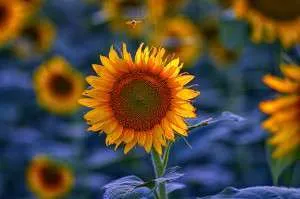Low calorie apples are a dieter’s dream — a medium apple is only about 80 calories! Apples are also a good source of fiber, especially if you eat the peel, and they contain only a trace of sodium and fat.
Selecting Apples:
High quality apples are smooth-skinned, crisp, juicy and well-colored for their variety. Varieties of apples that are not solid red should have a yellow-green undertone, often called “ground color.” A ground color that is too green indicates a less sweet or underripe apple. Ground color that is too yellow identifies an apple that is overripe, soft and mealy textured. Avoid apples with bruises, soft spots or wrinkled skin.
Handle apples gently to avoid bruising them. Apples will remain crisp and juicy longer if refrigerated. Keep apples in plastic bags with small air holes to maintain a high moisture level and delay withering. Missouri fall apples maintain excellent quality longer than apples that have been in commercial storage.
There are three major varieties available in Missouri from early to late fall: Jonathans, Red Delicious and Golden Delicious.
Find more about the best uses for each type, as well as tips for selecting, using and preserving fresh apples (including recipes) at http://missourifamilies.org/






